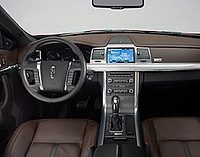Breaking Through in an Industry of Giants

It's no secret that the coatings market is a well-established industry without much flexibility for newcomers, especially those with a disruptive technology in tow. So how did a two-person outfit from Akron, Ohio, successfully carve a niche amongst the giants? The answer: A technology that precisely met market needs coupled with some savvy negotiating.
The industrial coatings industry has a deep and distinguished history in the United States. Dating back to the country's colonial days, America's first paint mill was established in 1700 by Bostonian entrepreneur Thomas Child. By the mid-1800s the industrial revolution had propelled the industry to new heights, cementing an integral piece of the American economy that is still with us, 300 years after Mr. Child set up shop. Following years of company acquisitions and consolidations, today's $17 billion coatings market is dominated by a few large players, with the top 10 companies representing about 77 percent of the U.S. market. Not only do we exist in a field of titans, the markets we serve are equally impressive, with roughly a third of the world's total economic output being derived from manufacturing industries. According to Paint & Coatings 2000: Review and Forecast, 14 major manufacturing industries depend on OEM coatings for their production. We are fundamentally linked to the automotive, machinery, appliances, paper, furniture and metal goods sectors.
Needless to say, both the coatings market and our customers in manufacturing constitute some of the most entrenched corporate forces in the world, and getting in the door requires a unique offering that addresses a significant market need.
Coatings' single most potent industry driver is the pressure to lower VOCs for environmental and human health considerations. As coatings are increasingly subject to rigorous restrictions on the harmful compounds, conventional technologies simply have not been able to provide the level of performance that the manufacturer and consumer demand. Durability and cost cannot be sacrificed - even for environmental compliance - if commercial success is the goal.
The product of a rogue innovator singularly determined to produce a solution, Ecology Coatings' ultraviolet (UV), quick-curing technology precisely addresses that market need. Completely VOC- and solvent-free, the clean coatings require 75 percent less energy and 80 percent less time to form a barrier that is often harder than incumbent technologies. And in this sector where time means money, those efficiencies spell significant value to manufacturers. The nanomaterial formulations can be used on conventional manufacturing lines for automotive and metal goods as well as new applications like electronics and plastics. Applied as a flexible thin film, the coatings can even be used to replace heavier, bulkier materials like glass, plastics or architectural materials. Addressing the VOC market driver in a lower cost solution, these highly functional coatings were capable of garnering real interest, even coming from a newcomer to the well-established coatings sector.
With that highly valued technology in our arsenal, we were capable of getting the market's attention; however, in a field of giants, that attention could potentially bring demolition as easily as success. And like any growing small business, we faced the challenge of needing capital investment and precious time to develop the manufacturing, sales and marketing infrastructure to a point that even nears the capabilities of those established competitors.
When I joined the company in 2002, our aim became readily apparent: to align the incumbents' strength with our small company's own interests. Introduce David to Goliath and get the two of them working in concert. Ecology Coatings could go far with access to the global customer base, industry expertise and manufacturing capabilities of those biggies. In the long run, securing solid strategic partnerships with the major players was one of the most important success factors for a start-up like Ecology Coatings.
At that point Ecology Coatings already had a revenue stream from refinishing tanks for natural gas customers, one area that our high-performance, heat-free UV-curing technology was particularly well suited to address. As technology innovators, our products could do the job, but we didn't want to spend precious employee resources on managing equipment installation and ensuring the high-quality service that we expect to deliver to our growing customer base. In order to remain focused on our core business strengths, we negotiated an exclusive license for that application to Red Spot Paint and Varnish, UV coatings specialists with those capabilities already in place.
A strong partnership certainly helped that piece of our existing business, but the real challenge lay in leveraging a licensing agreement to pursue an entirely new market. With promising revenues but daunting incumbents, the U.S. automotive manufacturing sector represented one such challenge.
Within a week of coming on board at Ecology Coatings, I made a cold call to DuPont Performance Coatings, the world's largest provider of automobile coatings. One year and many corroborating tests after that initial call, DuPont licensed Ecology Coatings' technology for its North American automotive pipeline. We got the sales and marketing oomph of the world leader while maintaining our independence, and DuPont is able to add an exciting new product to its offering.
Ultimately the licensing model enables Ecology Coatings to continue focusing on what we as the little guys do best - turning dynamic thinking and innovative technology into an expanding portfolio of market-ready coatings.
For more information, contact Ecology Coatings at 1238 Brittain Rd., Akron, OH 44310; phone 330/633.3500; fax 330/633.3464; or visit www.ecologycoatings.com.
Looking for a reprint of this article?
From high-res PDFs to custom plaques, order your copy today!





